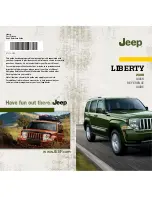
Cadillac CTS/CTS-V Owner Manual (GMNA-Localizing-U.S./Canada/Mexico-
11349156) - 2018 - CRC - 5/9/17
VEHICLE CARE
297
Rim
:
A metal support for a tire
and upon which the tire beads are
seated.
Sidewall
:
The portion of a tire
between the tread and the bead.
Speed Rating
:
An alphanumeric
code assigned to a tire indicating
the maximum speed at which a
tire can operate.
Traction
:
The friction between
the tire and the road surface. The
amount of grip provided.
Tread
:
The portion of a tire that
comes into contact with the road.
Treadwear Indicators
:
Narrow
bands, sometimes called wear
bars, that show across the tread of
a tire when only 1.6 mm (1/16 in)
of tread remains. See
UTQGS (Uniform Tire Quality
Grading Standards)
:
A tire
information system that provides
consumers with ratings for a tire's
traction, temperature, and
treadwear. Ratings are determined
by tire manufacturers using
government testing procedures.
The ratings are molded into the
sidewall of the tire. See
.
Vehicle Capacity Weight
:
The
number of designated seating
positions multiplied by
68 kg (150 lb) plus the rated cargo
load. See
Vehicle Maximum Load on the
Tire
:
Load on an individual tire
due to curb weight, accessory
weight, occupant weight, and
cargo weight.
Vehicle Placard
:
A label
permanently attached to a vehicle
showing the vehicle capacity
weight and the original equipment
tire size and recommended
inflation pressure. See
“
Tire and
Loading Information Label
”
under
Tire Pressure
Tires need the correct amount of
air pressure to operate effectively.
Caution
Neither tire underinflation nor
overinflation is good.
Underinflated tires, or tires that
do not have enough air, can
result in:
.
Tire overloading and
overheating which could
lead to a blowout.
.
Premature or
irregular wear.
.
Poor handling.
.
Reduced fuel economy.
Overinflated tires, or tires that
have too much air, can result in:
.
Unusual wear.
.
Poor handling.
.
Rough ride.
(Continued)
















































